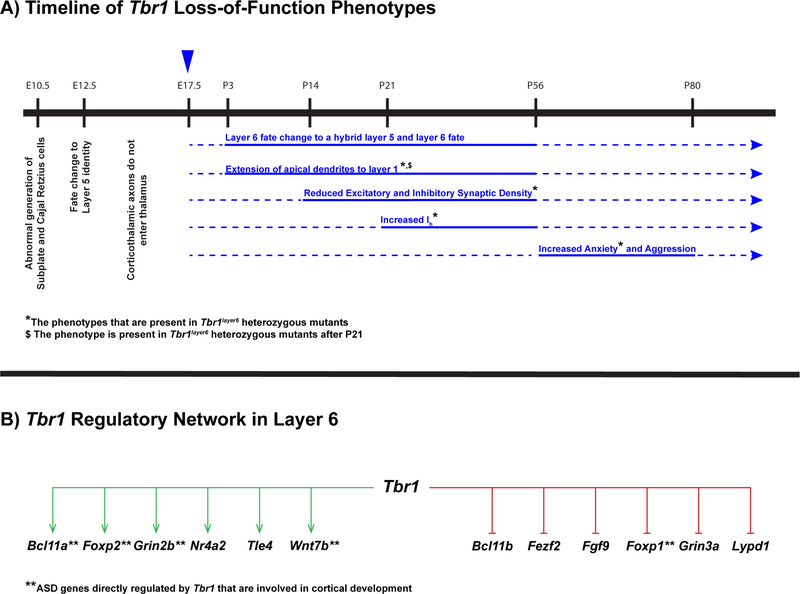Figure 8:
(A) Schematic representation of a timeline of Tbr1 loss-of-function phenotypes from embryonic stages until adulthood in mouse. The blue arrowhead at E17.5 corresponds to the timing of knocking out Tbr1 in layer 6 using conditional mutagenesis. Postnatal phenotypes associated with Tbr1 loss-of-function are shown in blue. Solid lines correspond to the developmental window in which we have provided evidence for the reported phenotypes. Dotted line represents the presumed duration of the reported phenotypes. (*) Indicates the phenotypes that are observed in Tbr1layer6 heterozygotes and homozygotes. (B) Schematic representation of regulatory network of Tbr1 in cortical layer 6. Tbr1 is a repressor (red) of determinants of layer 5 identity including Bcl11b, Fezf2, Fgf9, Foxp1, Grin3a and Lypd1. Conversely, Tbr1 dictates layer 6 identity through activation (green) of layer 6 markers including Bcl11a, Foxp2, Grin2b, Nr4a2, Tle4 and Wnt7b. (**) Indicates ASD genes directly regulated by Tbr1 (TBR1 genomic binding and expression changes in the mutant) that are involved in cortical development.

